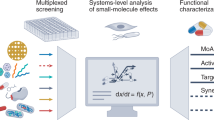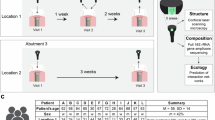Abstract
Aim
The purpose of this study was to develop a mathematical model to quantitatively describe the passive transport of macromolecules within dental biofilms.
Methodology
Fluorescently labeled dextrans with different molecular mass (3 kD, 10 kD, 40 kD, 70 kD, 2 000 kD) were used as a series of diffusion probes. Streptococcus mutans, Streptococcus sanguinis, Actinomyces naeslundii and Fusobacterium nucleatum were used as inocula for biofilm formation. The diffusion processes of different probes through the in vitro biofilm were recorded with a confocal laser microscope.
Results
Mathematical function of biofilm penetration was constructed on the basis of the inverse problem method. Based on this function, not only the relationship between average concentration of steady‐state and molecule weights can be analyzed, but also that between penetrative time and molecule weights.
Conclusion
This can be used to predict the effective concentration and the penetrative time of anti‐biofilm medicines that can diffuse through oral biofilm. Furthermore, an improved model for large molecule is proposed by considering the exchange time at the upper boundary of the dental biofilm.
Similar content being viewed by others
Article PDF
Author information
Authors and Affiliations
Corresponding authors
Rights and permissions
About this article
Cite this article
Ma, R., Liu, J., Jiang, Y. et al. Modeling of Diffusion Transport through Oral Biofilms with the Inverse Problem Method. Int J Oral Sci 2, 190–197 (2010). https://doi.org/10.4248/IJOS10075
Received:
Revised:
Accepted:
Published:
Issue date:
DOI: https://doi.org/10.4248/IJOS10075
Keywords
This article is cited by
-
Influence of Nutrient Availability and Quorum Sensing on the Formation of Metabolically Inactive Microcolonies Within Structurally Heterogeneous Bacterial Biofilms: An Individual-Based 3D Cellular Automata Model
Bulletin of Mathematical Biology (2017)
-
Inhibition of Streptococcus mutans biofilm formation, extracellular polysaccharide production, and virulence by an oxazole derivative
Applied Microbiology and Biotechnology (2016)



